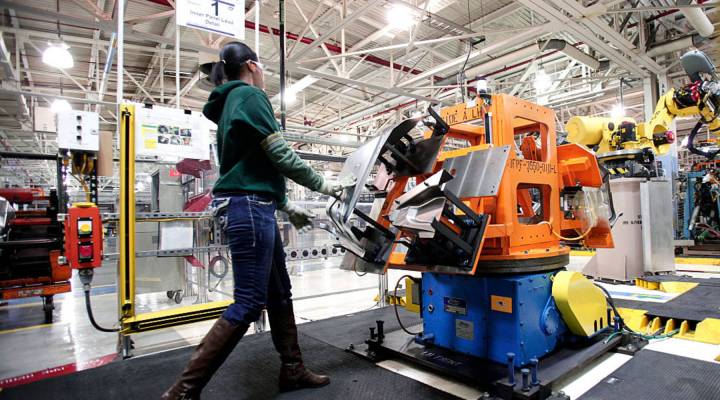
How much could the return of factory jobs add up to?

This election season, we’ve heard Republican and Democratic presidential candidates alike decry international trade deals for sending manufacturing jobs overseas. And candidates have vowed to bring the jobs back. Some factory work is indeed returning from offshore, a movement known as “re-shoring.”
A group called the Reshoring Initiative estimated that over the past five years, as many as 100,000 factory jobs have returned from overseas. But some in manufacturing are skeptical.
“There is simply not a consistent data set where I graph the reshoring variable and show it to people, which I would love to do,” said Cliff Waldman director of economic studies with the Manufacturers Alliance for Productivity and Innovation Foundation.
Waldman said some U.S. manufacturers are eyeing rising labor costs in China or governance issues in Brazil and deciding not to build factories there.
“But that does not mean they’re closing out the factory in China and bringing that factory back home,” he said. “That’s a strange picture.”
A few years ago, Hiawatha Rubber, a small precision manufacturer outside Minneapolis, enjoyed some employment gains tied to reshoring. Howard Hauser, vice president of operations, said some of the firm’s customers suffered quality issues with Asian suppliers and handed the work to Hiawatha instead.
“We did bring a couple jobs back, but that kind of stopped then. That trend has not continued,” he said. “So at this point I would look back at that and say that was a bit of a fluke.”
Payroll has actually dropped since then, Hauser said, in part due to more offshoring. Hiawatha lost a big contract to a Japanese competitor.
He expects to hire more workers in coming years but not to increase headcount substantially. A promising business line is unlikely to yield lots of new jobs because the work is highly automated, a trend taking shape at many factories.
“Only part of the problem of manufacturing employment in the United States is the problem of foreign trade,” said Gary Burtless, an economist with the Brookings Institution. “Another big part is manufacturers are very good with coming up with more efficient ways to produce things, lessening the demand for workers here in the United States.”
Burtless said that since the end of the recession, manufacturing output in the United States has increased over 20 percent, while factory employment only climbed five percent.
Doing more with less is generally perceived by economists as a good thing— a manufacturing success that politicians are unlikely to mention.
There’s a lot happening in the world. Through it all, Marketplace is here for you.
You rely on Marketplace to break down the world’s events and tell you how it affects you in a fact-based, approachable way. We rely on your financial support to keep making that possible.
Your donation today powers the independent journalism that you rely on. For just $5/month, you can help sustain Marketplace so we can keep reporting on the things that matter to you.












